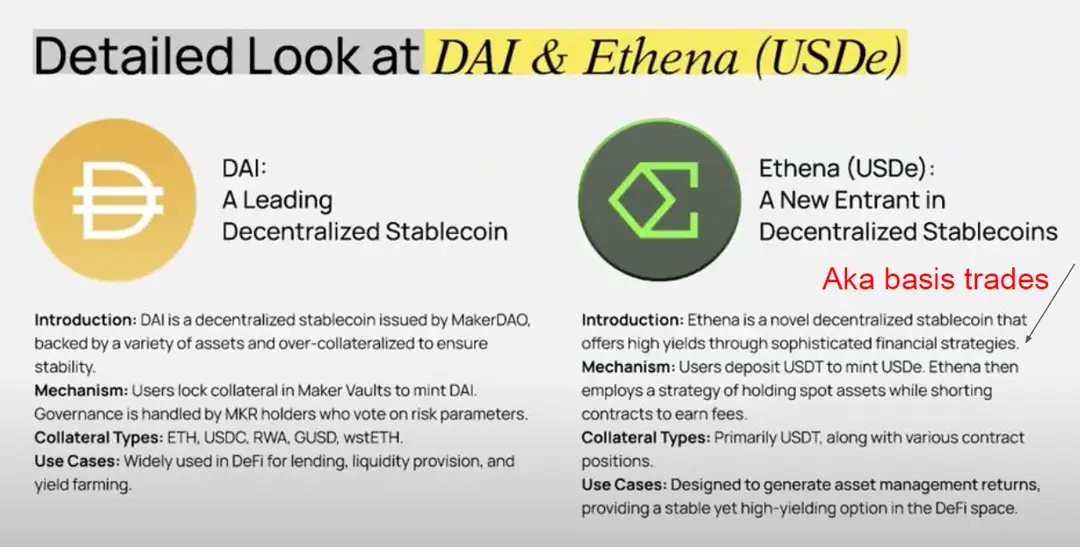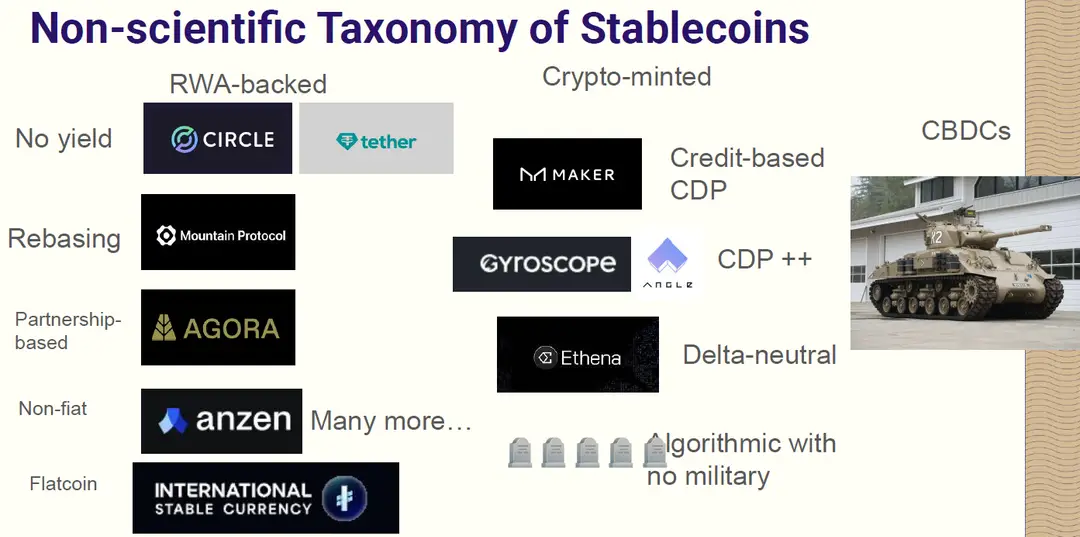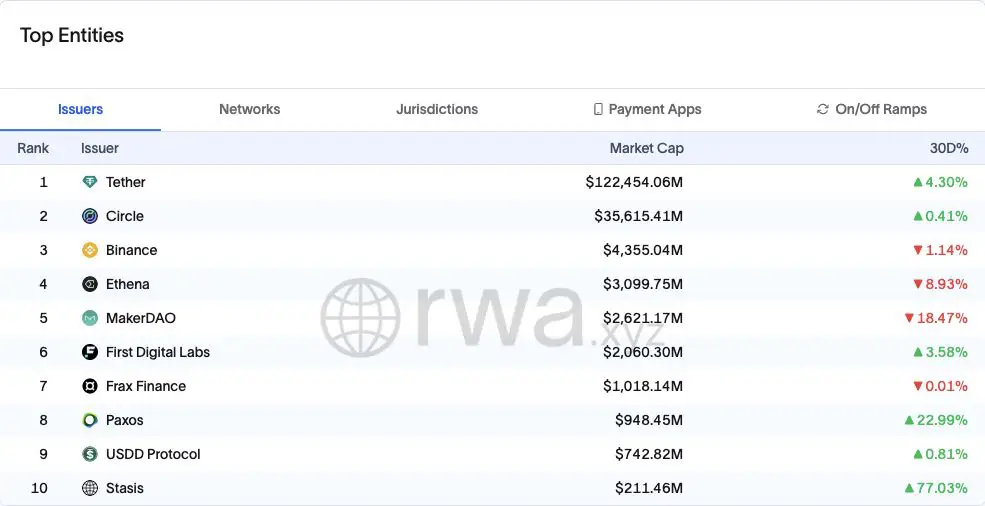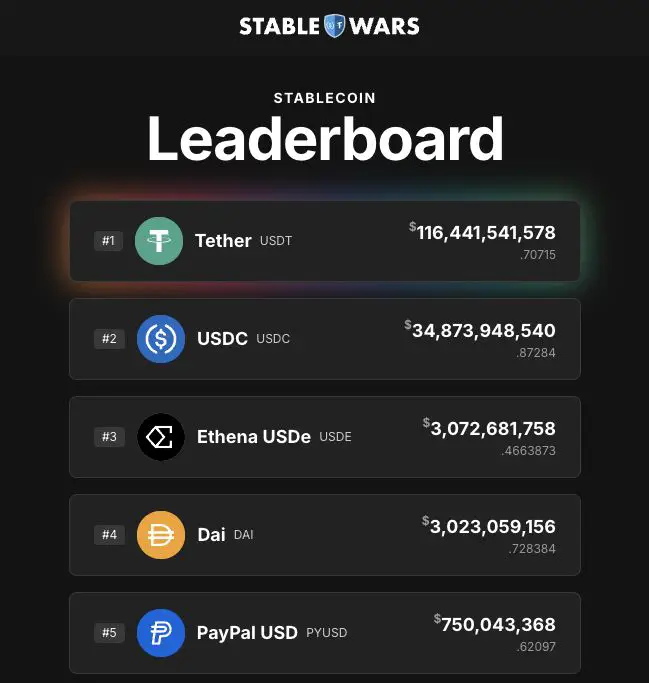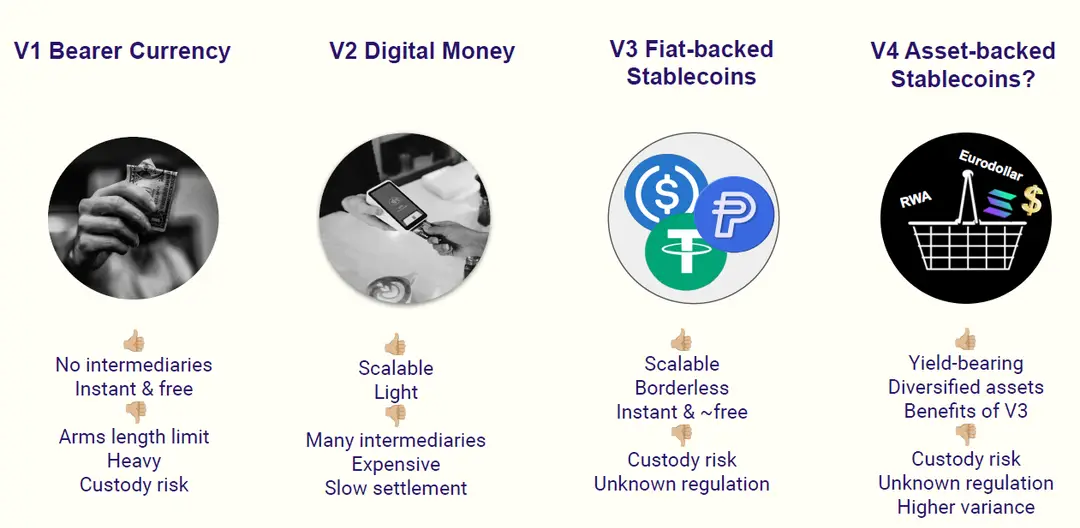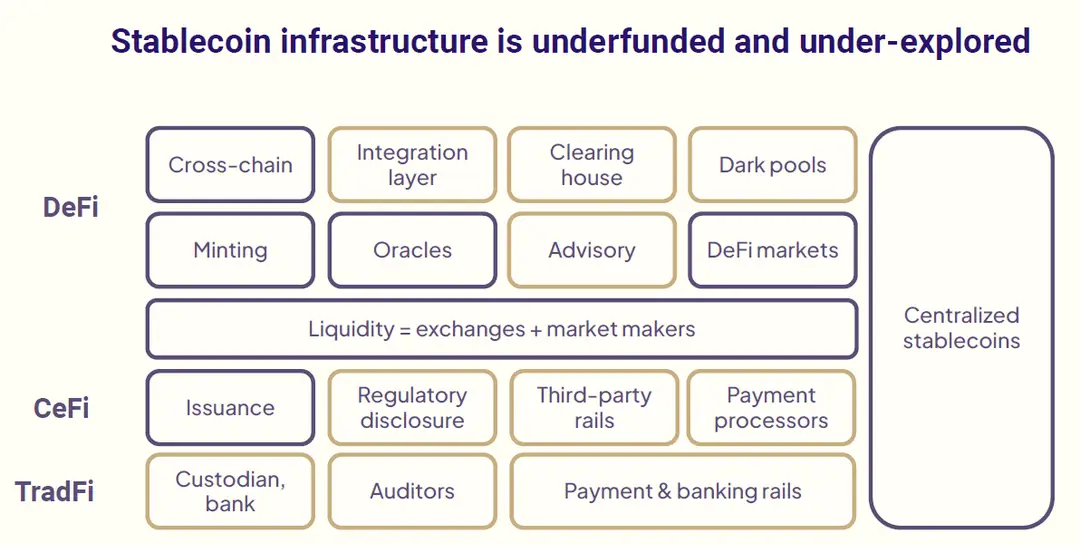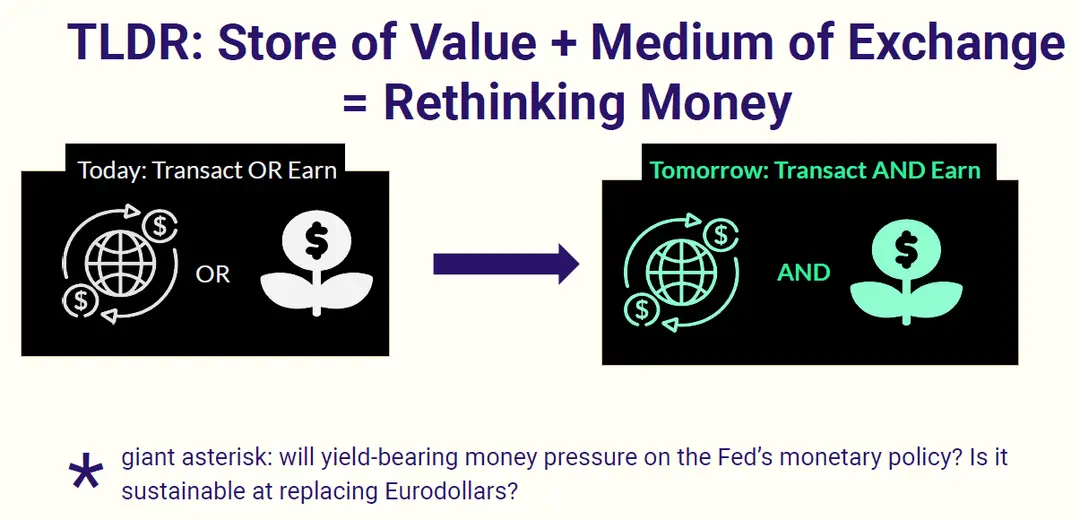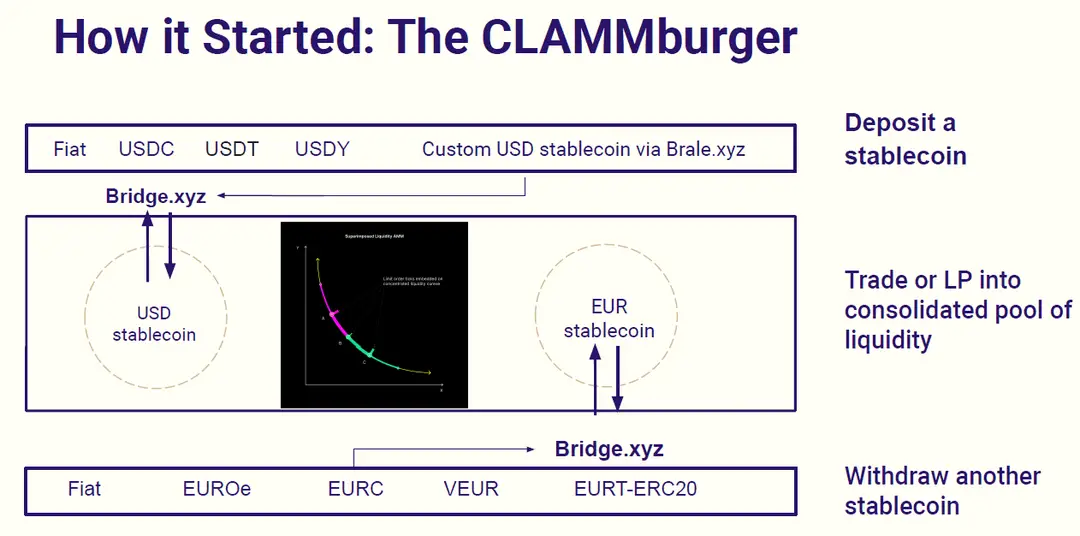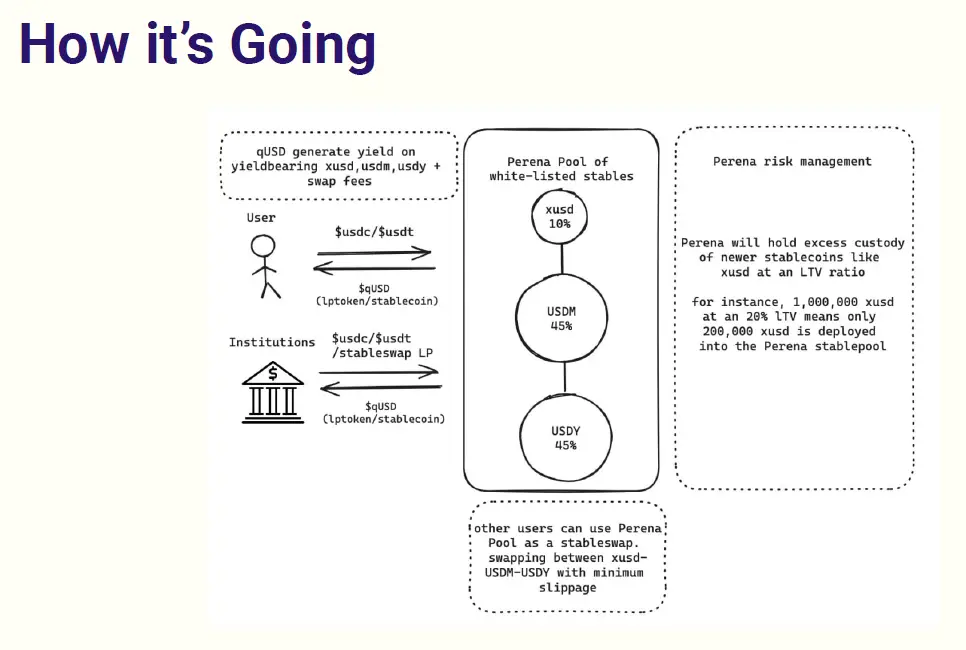1.Understand the different types of stablecoins and their roles.
2.Learn about the challenges and opportunities in the stablecoin ecosystem.
3.Explore how stablecoins are reshaping the financial landscape in Web3.
●Fiat-Backed Stablecoins:
●Mechanism: These stablecoins are backed 1:1 by fiat currencies held in reserve. The value is directly tied to the underlying fiat currency, ensuring stability.
●Characteristics:
●Highly liquid and widely accepted in the crypto ecosystem.
●Subject to regulatory scrutiny and require trusted custodians to hold reserves.
●Crypto-Minted Stablecoins:
●Mechanism: These stablecoins are backed by cryptocurrencies, often over-collateralized to maintain the peg.
●Characteristics:
●Operates in a decentralized manner without reliance on traditional financial systems.
●More volatile than fiat-backed stablecoins due to the volatility of the underlying crypto assets.
●Algorithmic Stablecoins:
●Examples: UST (before its collapse).
●Mechanism: Rely on algorithms to automatically adjust the supply of tokens to maintain their peg. For example, they might burn or mint tokens in response to price changes. ●Characteristics:
●No collateral is required, relying purely on supply-demand dynamics.
●Higher risk, as seen with the failure of some algorithmic stablecoins.
●Asset-Backed Stablecoins:
●Examples: Gold-backed stablecoins.
●Mechanism: Backed by tangible assets like gold or real estate, which provide intrinsic value.
●Characteristics:
●Offers a hedge against inflation and other economic risks.
●Less liquid compared to fiat-backed stablecoins due to the nature of the backing assets.
●brrr.money and thefed.app
●Beneficiary and Victim of Regulatory Arbitrage:
●Key Points:
●Stablecoins operate in a regulatory grey area, benefiting from the lack of strict oversight but also vulnerable to sudden regulatory changes.
●Unlike bank deposits, stablecoins are not protected by FDIC insurance, making them riskier in the event of a collapse.
●Regulatory bodies may impose freeze authority on certain stablecoins, adding another layer of risk.
●Examples:
●Circle (USDC): Faced challenges related to treasury management, highlighting the importance of robust financial oversight.
●Tether (USDT): Although it has collaborated with entities like FinCEN and the FBI, Tether has a controversial history, raising concerns about its transparency and stability.
●New Issuers and Infrastructure:
●Emerging Platforms: New platforms like Brale.xyz and Bridge.xyz are creating opportunities for yield through stablecoin issuance as a service, challenging traditional stablecoin issuers.
●Protocol Complexity: The proliferation of stablecoins adds complexity to DeFi protocols, which must now manage multiple types of stablecoins with varying levels of liquidity and stability.
●Reliable Stablecoins: There is a growing need for stablecoins that are not only reliable but also highly liquid, attracting more volume to DeFi protocols.
●V3 Fiat-Backed Stablecoins:
●Digital currencies pegged to fiat, offering borderless transactions with instant settlement, making them ideal for global commerce and DeFi applications.
●They offer the benefits of fiat currency, such as stability and familiarity, combined with the advantages of digital assets, like speed and lower transaction costs.
●V4 Asset-Backed Stablecoins:
●The potential future evolution where stablecoins are backed by a diversified basket of assets, reducing risk and providing a more stable store of value.
●These could include not only fiat currencies but also commodities like gold and other valuable assets, offering a hedge against inflation and economic downturns.
●Issuance and Regulation:
●The issuance of stablecoins is increasingly coming under regulatory scrutiny, with authorities demanding greater transparency and oversight.
●Advisory services and regulatory disclosure are becoming essential for new stablecoin projects to ensure compliance with international laws and standards.
●Infrastructure Requirements:
●The stablecoin ecosystem requires a robust infrastructure that includes custodians, banks, auditors, and integration layers to support seamless operations.
●Decentralized infrastructure for money is also being developed, with a focus on building trust and consensus mechanisms that can replace traditional financial intermediaries.
●Yield-Bearing Stablecoins:
●Platforms offering yield on stablecoins are gaining traction as users seek to maximize returns on their holdings. This trend is leading to the development of new stablecoin models that offer both stability and yield.
●Example: Brale.xyz is one of the platforms offering yield-bearing stablecoins, challenging traditional stablecoin issuers by providing additional financial incentives.
●The growth of yield-bearing stablecoins raises questions about their sustainability and the potential impact on traditional financial systems.
●Background: Perena is a stablecoin project that has gained significant attention due to its innovative approach to maintaining stability and fostering financial inclusion. The project aims to provide a stable, reliable currency that can be used globally, especially in regions where access to traditional banking is limited.
●Perena’s Impact on the Stablecoin Market
●Market Adoption: Perena has seen significant adoption in various markets, particularly in regions where traditional financial services are either inaccessible or inefficient.
●Partnerships and Integrations: The project has partnered with several DeFi platforms, enabling users to trade, lend, and borrow using Perena across different blockchain networks.
●Regulatory Challenges: Despite its success, Perena faces regulatory challenges, particularly in regions with strict financial regulations. The project’s decentralized nature has both advantages and disadvantages in navigating these regulatory environments.
1.Q: How does it work founding a startup?
A: I work a lot, every day. I'm also becoming an advisor at the Solana Foundation, so a lot of that is part-time, supporting Solana. Most of my time is full-time work for Parana. It’s highly synergistic, so many calls I'm on are also about explaining to stablecoin issuers what Solana is, how to come to Solana, how to issue. I've been learning a lot for Parana because they give me requests, like "I want to come to Solana; how do I launch a stable swap?" This is what came out after two years of working at Solana Foundation, because all the issuers were asking, "I want to launch on Solana; how do I spin up a liquidity pool? I need AMM, I need this, I need that." So, I decided to come out and do this, so you guys can have a stablecoin launchpad. That’s how it goes.
2.Q: What’s Toli like?
A: Toli sometimes has interesting ideas. He once asked me about airplane tickets for a week, and I was like, okay. But sometimes, his ideas might not work. He has many great ideas, and that's why he's a founder. He has 20 ideas, and maybe 19 of them are kind of shit, but one of them is really good, and he keeps going after that one idea. Yeah, I've enjoyed working with him.
3.Q: Is Breakpoint free to attend?
A: No, unfortunately not, but side events are free. If you just show up in that general area, I'm sure you'll run into a lot of people who will point you in the direction of free food and free things. Side events that are free are on the Breakpoint website as well, so you can check those out. Token 2049 typically comes with a lot of side event lists that are free. If you don't have specific reasons to go to those conferences, you can go to the side events. Breakpoint is going to be online. The videos will be online. Personally, I don't really go to a lot of the talks. I listen to them on 2x speed after the talk happened, and then I just hang out at the side events. When I listen to the talk, I'm at the gym, so it's very efficient.
